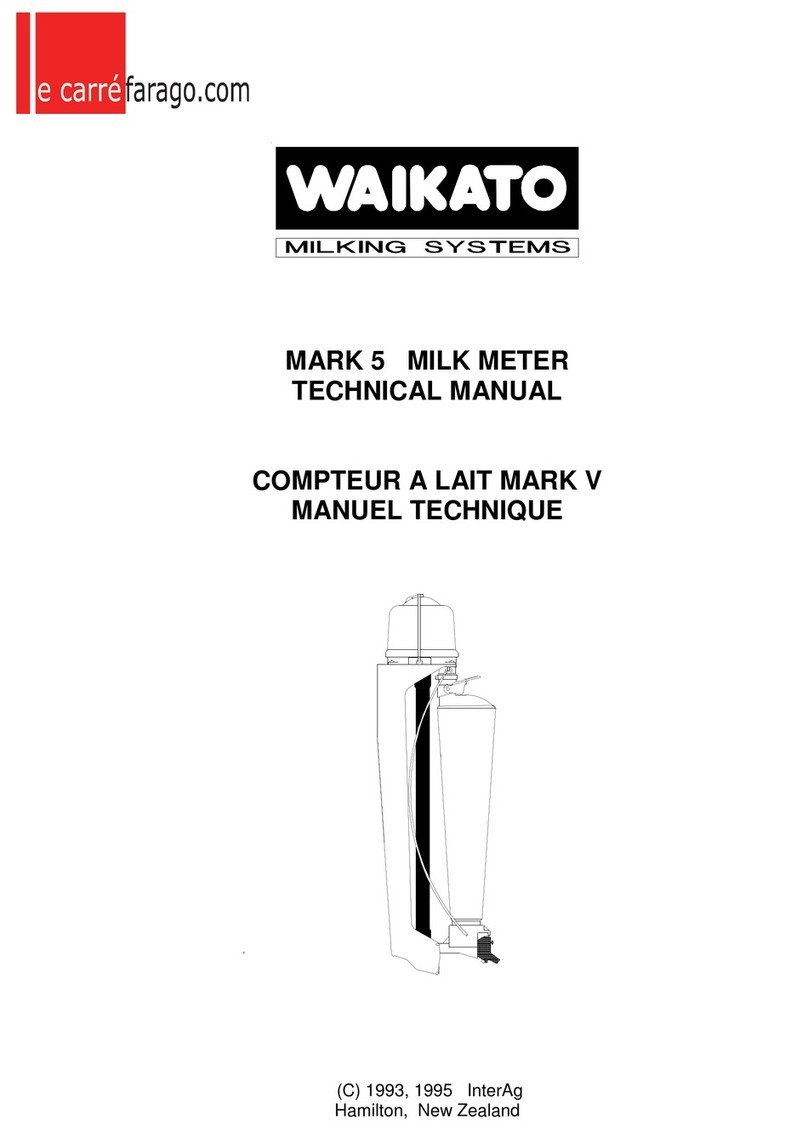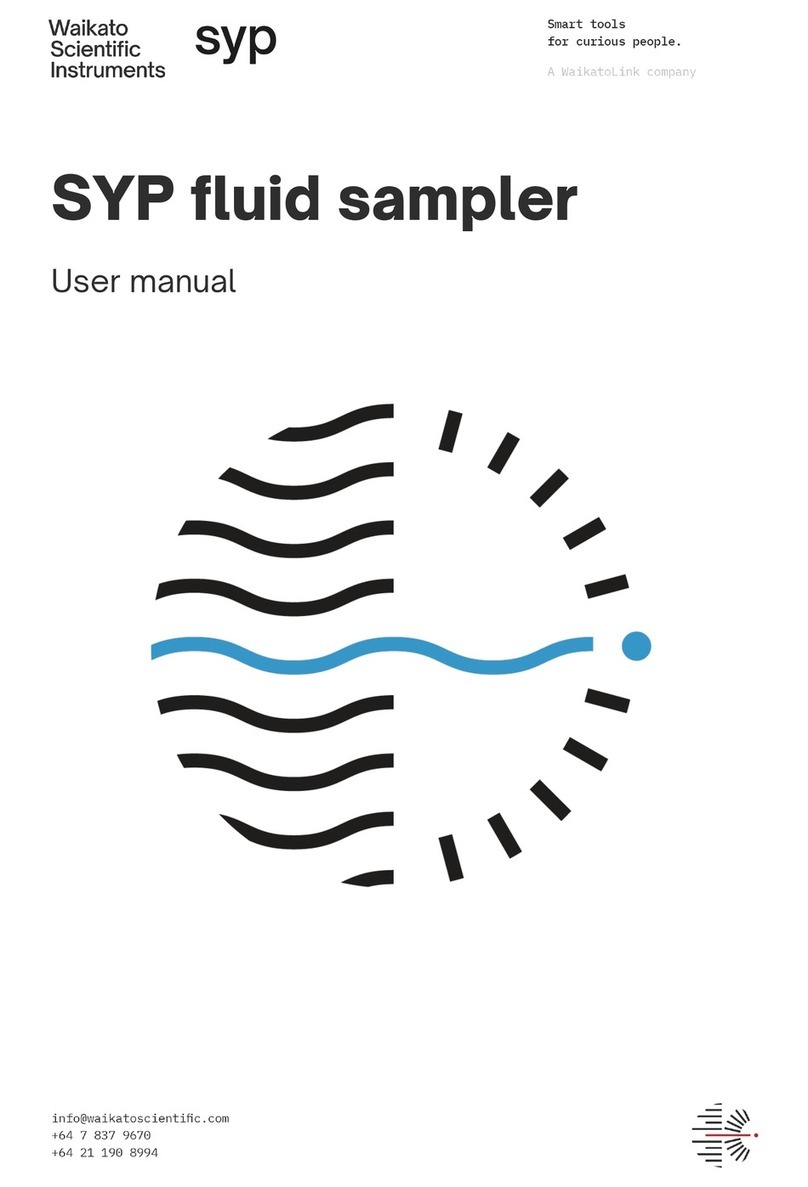
WAIKATO ROTARY LOOPLINE MAINTENANCE
PULSATION
Waikato Milking Systems NZ Ltd recommends that all pulsation options used by
Waikato Milking Systems are serviced at least twice a season. Graphing the pulsation
wave form is most likely all that is necessary. Waikato Mk 2 Automatic pulsators should
have their speeds checked and adjusted if necessary as well.
The pulsators will normally be connected to a filtered air system. If they are not, the
sponge filters in the pulsators themselves should be removed at least every week and
washed in warm soapy water before being put back.
The internal components of all Waikato pulsators can be washed in warm soapy water.
When removing the rubber pulse tubes from the pulsators be sure to pull directly down
on the nipple on the pulsator. Damage to the nipple may result if a sideways pull is
used.
WARNING: If pulsators are dismantled they must be tested by a registered
milking machine tester before the start of the next milking. Failure to do so may
result in loss or damage to animal health.
REGULATORS
Your Waikato Rotary Loopline is fitted with a Waikato Supavac regulator which has
been designed to give consistent performance over a wide range of vacuum levels.
Like all vacuum regulators it can be affected by dust and dirt and its filter should be
cleaned at least once a week by removing it and washing it in warm soapy water.
The performance of the regulator should be checked by a qualified milking machine
tester at least once a year. The regulator should not be adjusted or altered in any way
unless it is checked immediately after using an independent vacuum gauge which has
been calibrated against a manometer.
SANITARY TRAP
Your Waikato Rotary Loopline is installed with a sanitary trap containing a ball float.
This isolates the receiver from other parts of the machine.
The washing system is designed to allow some water to flow from the receiver through
the receiver air line to the sanitary trap during washing. This water drains back into the
receiver through a rubber tube which has a snap clamp on it. During washing open the
snap clamp. Make sure the snap clamp is closed during milking.
AIR INJECTOR
Your Waikato Rotary Loopline is equipped with an electronic air injector which injects
air into the milk line during washing, causing the wash water to move rapidly around the
milk line. The open and closed times for the injector are set at the time of installation of
the machines. They should not need any further adjustment.
5




























